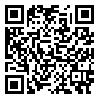BibTeX | RIS | EndNote | Medlars | ProCite | Reference Manager | RefWorks
Send citation to:
URL: http://ioh.iums.ac.ir/article-1-728-en.html
Background and aims: Considering the role of human errors in the incidence of catastrophic events in control rooms and also Lack of effectiveness of classical techniques to identify the human errors, special techniques are required for identification of human errors. Therefore, this study aimed to identify human errors in the control room in an oil company Using HEIST Technique.
Methods: The present study is a case study of qualitative research that was conducted with using HEIST Technique. Collection of the required information has been done with Walking-Talking Trough and «Rose & Roses» model that is used for classification the decision-making process.
«Kirwan» model is used for classification of factors that are involved in human errors and Types of errors have been detected with the SRK Model.
Results: Overall, 300 human errors has been detected. Of which, » interactions with controllers and indicators « , » instructions « and » training and experience « alone causes 71 percent of human errors in control room operators.
In addition, 90% of human errors were related to the "stages of implementation of the solution", "observing system" and "selection hypothesis".
Conclusion: The results of this study showed a variety of possible scenarios resulting from human errors and their unintended consequences.These results emphasize that there are several weaknesses suggesting the implementation of both engineering and administrative controls simultaneously to reduce human errorsReceived: 2012/06/9 | Accepted: 2013/09/24 | Published: 2013/09/24
| Rights and permissions | |
 |
This work is licensed under a Creative Commons Attribution-NonCommercial 4.0 International License. |





